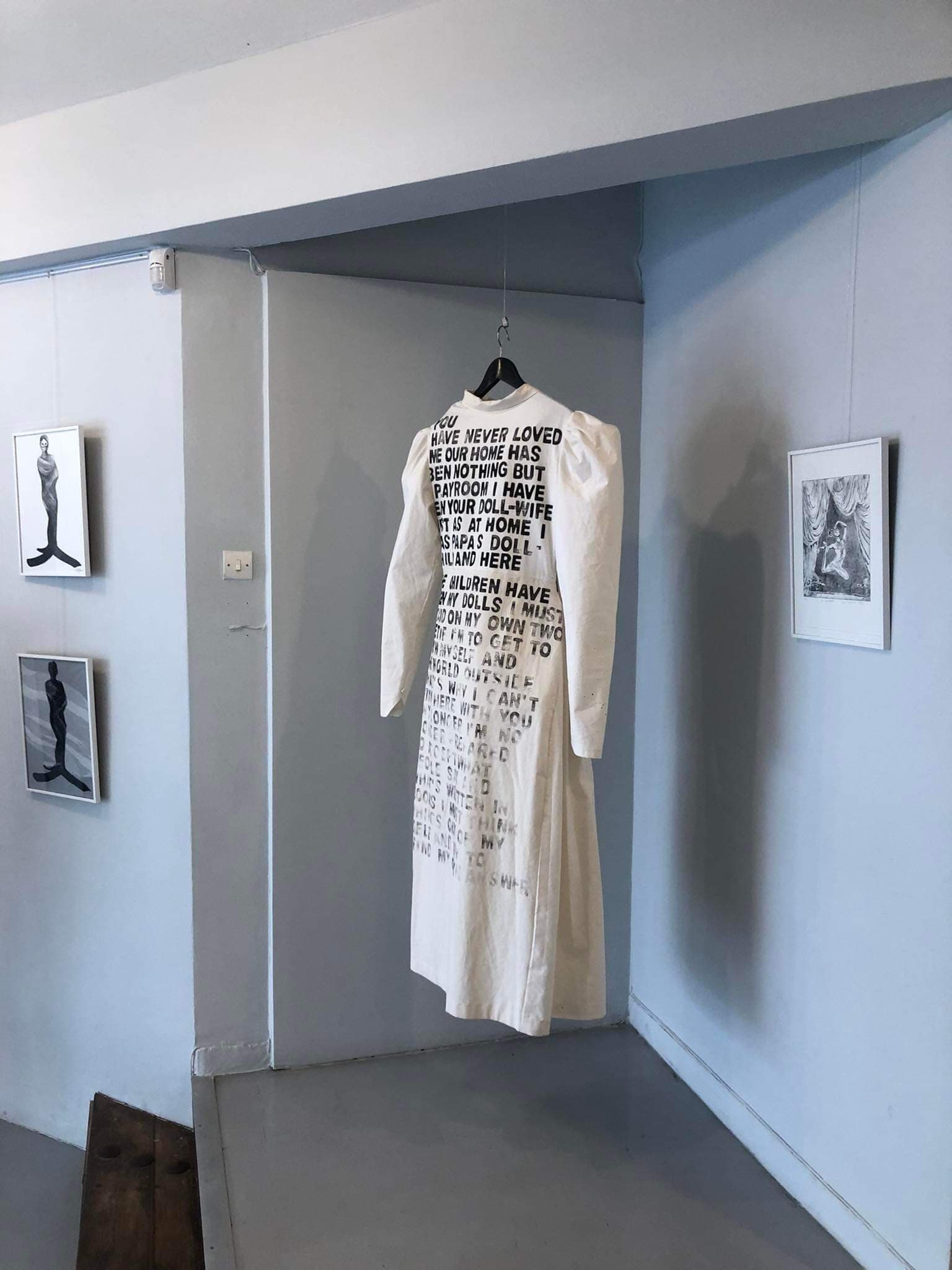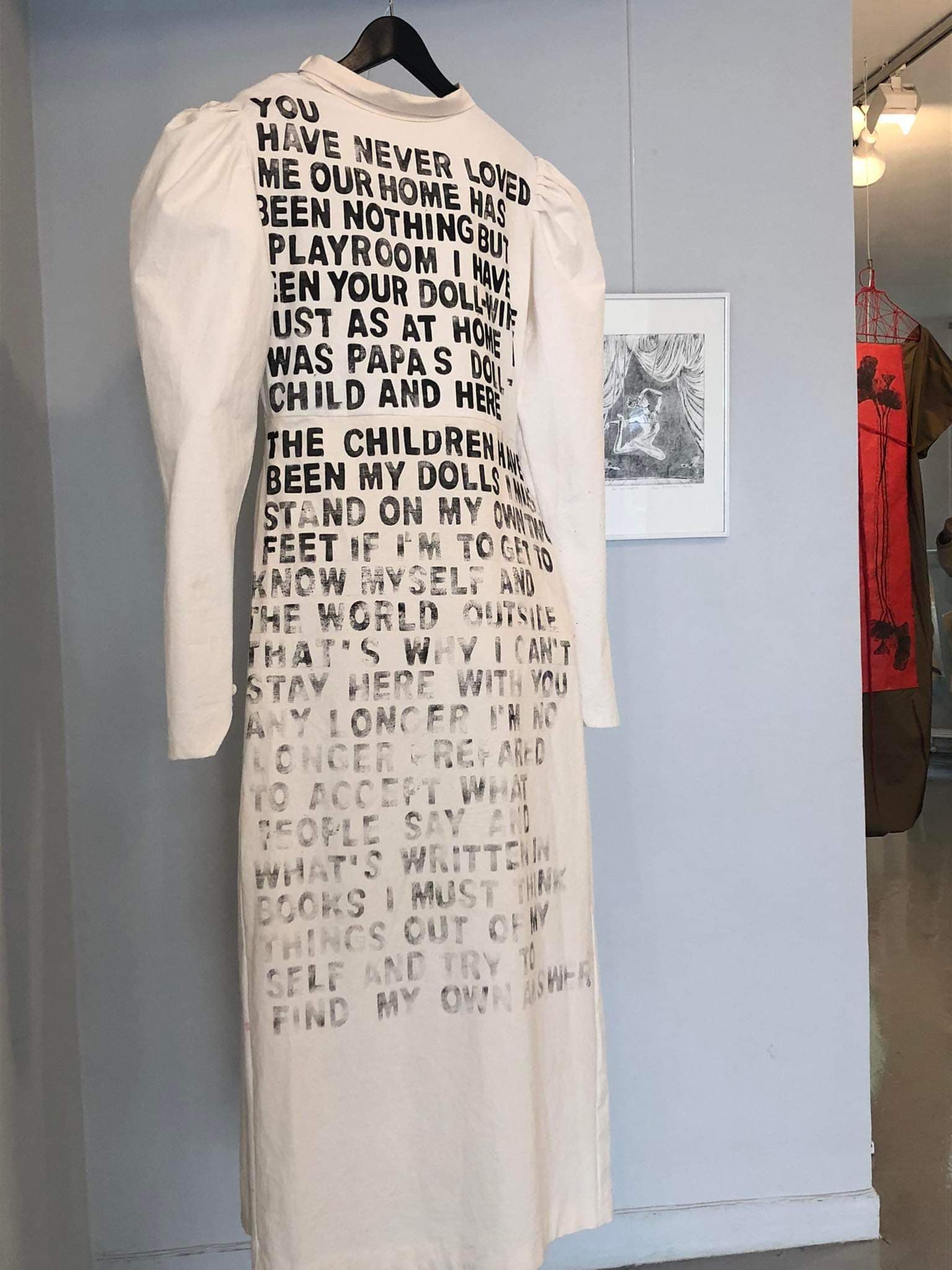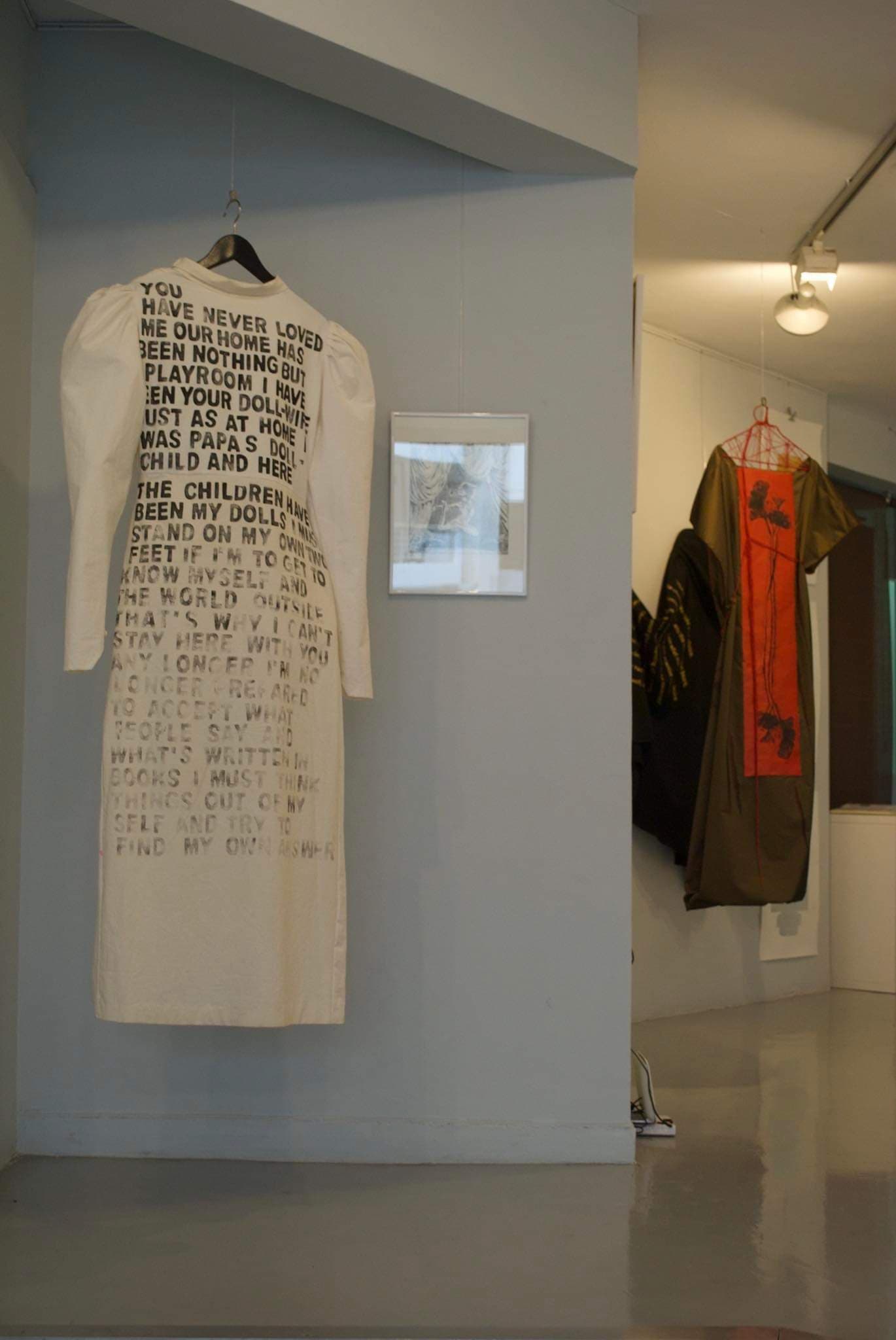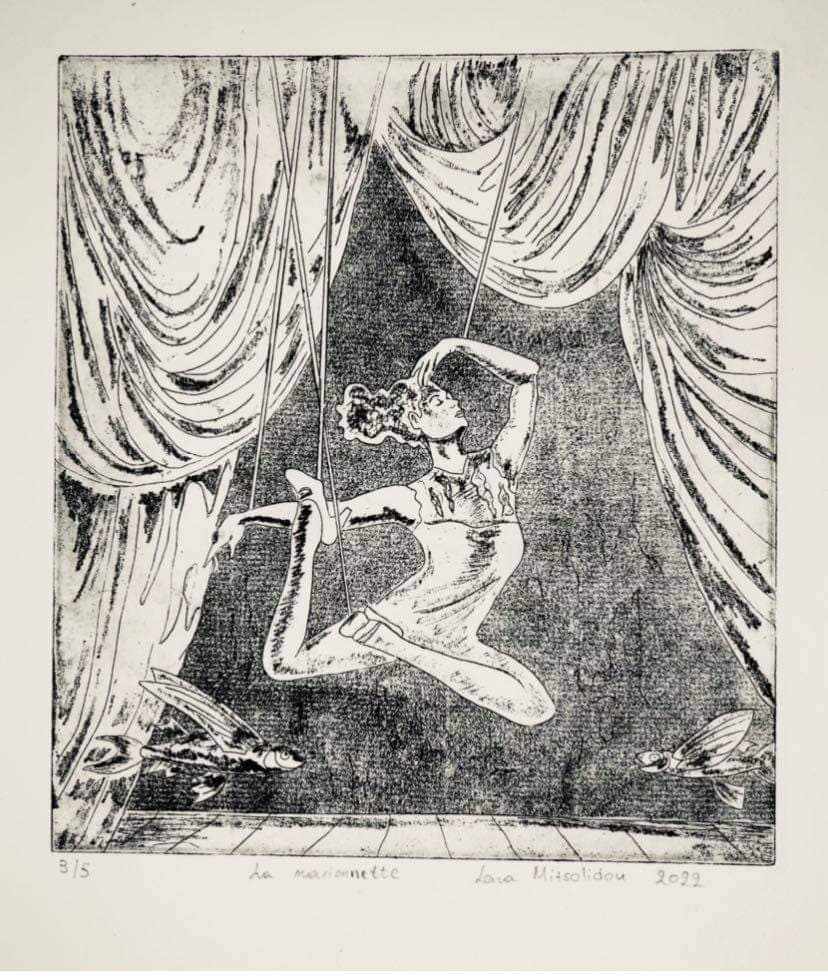In the exhibition “Surmounting Reality” nine contemporary visual artists explore the intersections of artistic media and the creative discourse between theatrical costume and printmaking. The theatrical costume, which is an indispensable element in the process and aesthetics of a play, becomes the canvas for the artists to experiment with variable materials, mixed media, textures, ink and its imprints on textiles, also investigating new artistic trajectories and dynamic interventions between them. The theatrical costume as a printing field becomes a surface of xperimentation for printmaking, which marks the fabric with the imprints and inscriptions of its very own writing and narrative. By converging the two media, a new language emerges, capable of revealing new interpretations, conceptualizations and correlations between them, thus creating a field for their overlapping languages. The works presented are combinations of mixed media, traditional and digital printing techniques, and therefore can be read through multiple conceptual levels.
The concept of this exhibition derives from the field of theatre, and, more precisely, from the characters which are structural elements and bearers of action in the dramatic process. Nine visual artists were invited to approach the relationship between theatrical costume and a theatrical character of their choice, who despite the struggling and challenging conditions; actually managed to
make a metaphorical or psychological leap to overcome them. Be it external constraints, such as societal norms, religion and stereotypical limitations, or internal blockages, such as dilemmas and psychological impasses, the selected characters seem to draw their own individual path, surmounting restraints, as they finally liberate themselves and become more empowered than before.
The Greek translation of the words engraving (χαρακτική) and character (χαρακτήρας), have a common etymological root, originating in the Greek verb χαράσσω which means etch or engrave. The word “χαρακτική” is a general term to refer to the art of printmaking, but the literal meaning of the Greek word mainly demonstrates the act of engraving onto a hard plate. Xαρακτική is a term which circulates within manifold meanings and practices to encapsulate a various techniques such printing, engraving and etching. Simply put, it is any sort of print created by cutting, incising or biting marks and lines into resistant material surface like paper, metal, wood or fabric. The word “character”, is a malleable term open to multiple interpretations. Its most common use refers to a person and, particularly, to the set of qualities that make them differ from others. It can also denote the smallest typographical element (letter), that is the character of a language, but also a role or function in terms of performance, when referring to a character in theatre, literature or cinema. The common linguistic heritage that these two words share in Greek, not only manifests a conceptual mirroring of their implied meanings, but it also unravels the creative processes and potentialities that can emerge from the convergence of printmaking, theatrical garment and theatrical character, when these come together and take material and visual shapes.
Lena Mitsolidou focused on the character of Nora Helmer from Henrik Ibsen’s The Dollhouse. Nora, a mother of three and wife of Tolvar Helmer, is a woman living in the male-dominated society of 19th century Norway. The transgression and rebelliousness of Nora’s character emerges right at the moment she leaves her family and asserts her independence. In Ibsen’s play, Nora embodies a true symbol of feminism long before feminist thought was systematized into discourse. Mitsolidou treats Nora’s dress as bearer of both meanings and clichés. The bare, neutral white surface of the dress resembles a white canvas, a white page or new chapter ready to be written. On the back of the garment, the artist imprints Nora’s final monologue in bold black lettering that gradually fades, as a metaphor for Nora receding. On the front of it, there is a printed design of a puppet, both decorative and ironic. Nora’s costume merges traditional with contemporary elements, while simultaneously revealing a story of tragedy and impending catharsis.
This exhibition comes at a time when the global community is in the wake of a pandemic, if not yet in the midst of it. We are experiencing a global crisis of multiple aspects, not only in health but also in finance, society, culture and politics. This turmoil has been so disastrous to shake humanity from within, regardless of geography and spacial location. The trauma caused by these cracks is perhaps still too early to be faced and processed in depth. Confinement, isolation, and the accompanying feelings of fear and threat of death, have become a common experience for all, while any previous standard notion of “normality” has been disrupted. The body, the living organ through which we experience and interact with the world and the people, was subjected to new and unusual functions. It was rendered threatening and dangerous to other bodies, and as such it was forced into restricted zones running the risk of becoming introverted and unsocial. Regarding the space and the relations that emerge within spaces, the concepts of private and public were stripped off their initial signifiers and operations. Through the lens of the pandemic, the private and public spaces have become sites where confinement, inertia and collective trauma are the new registered experiences.
Nevertheless, in the midst of this generalized suspension of all kinds of activity and impasse, there have been various expressions of & “resistance” by individuals and groups of artists (as is usually the case in such destabilizing and critical conditions), who not only kept on creating art, but also adjusted their artistic media and found alternatives in order to meet the public. Although a field of artistic experimentation was opened up, mainly through the outlets made possible by digital art, the body-tobody encounter with art is a vital, prerequisite live experience that cannot be replaced.
Taking into account the current context in which this exhibition takes place, the title “Surmounting reality” reflects the artists’ intention for vision and creation beyond barriers, solid walls and anything that keeps us bound and confined.
For this reason, the characters were deliberately picked as examples of people who claim their own unique identity and their right to self-determination, staying true to themselves and their values despite internal or external pressures.
Vassia Magoula
Art historian – Museologist





